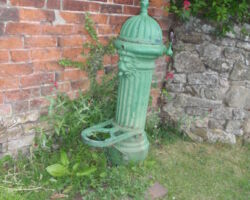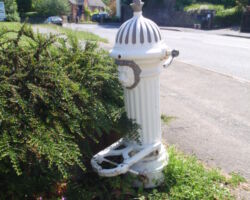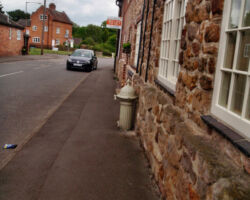Ticknall is a historic Derbyshire village going back to Anglo Saxon era and is mentioned in the Domesday Book as Tickenhalle which is of Saxon origin meaning the place at the nook of land where kids are found.
It was the estate village of Calke Abbey until late in the 20th century and reached its heyday in the late 18th and early 19th centuries when the limeyards and the brickmaking, tile and pottery industries were operating at maximum output. At the start of the 19th century the Ticknall Limeyards were operated by two different classes of people, namely freeholders and tenants. Some of the freeholders in the parish had their own limeyards while others were worked by tenants for the Harpur-Crewe and Burdett families. As the century progressed the freeholders went bankrupt for various reasons while the tenants of the Harpur-Crewe family gave up because of the high rents charged and general mismanagement of the limeyards.
St George’s Church was built in 1842 as a replacement for Ticknall’s Old Church, which had been dedicated to St Thomas a Becket (or St Thomas of Canterbury) which was in poor repair, and had become too small for a rising population. The old church was with gunpowder from the limeyards. Its replacement was designed by Henry Stevens of Derby, and cost £4,000, the cost met largely by Sir George Crewe, of Calke Abbey. Two portions of the Old Church are still standing in the graveyard, about 50 yards south of the present building.
Two portions of the Old Church are still standing in the graveyard, about 50 yards south of the present building.
Adjacent to the ruins is a medieval cross whose function is uncertain. It is thought that it may have been either a preaching cross or a market cross and was moved from its site in the almshouse gardens, when the almshouses were built. The new church was designed in the Perpendicular Gothic style by Henry Isaac Stevens of Derby and new stained glass windows were inserted in the 1920s. Various items were removed from the old church to the new one including three wall mounted monuments, the finest of which is an alabaster slab of about 1375 incised with an effigy of a knight and dedicated to John Franceys of Ticknall.
The new church was designed in the Perpendicular Gothic style by Henry Isaac Stevens of Derby and new stained glass windows were inserted in the 1920s. Various items were removed from the old church to the new one including three wall mounted monuments, the finest of which is an alabaster slab of about 1375 incised with an effigy of a knight and dedicated to John Franceys of Ticknall.
Outside the south door, mounted on a sandstone base, is the clock face from the early church. From the existence of a groove upon its face it would appear to have been adapted at some time for use as a sundial. The clock on the new church was the last one built by John Whitehurst of Derby, before they were taken over by Smith’s.
A public water supply was installed on the instruction of Sir Vauncey Harpur-Crewe of Calke Abbey in 1914
Piped water was introduced to the village in the 1950s
The pillar fountains are Grade II Listed and were manufactured by Glenfield and Kennedy Ltd of Kilmarnock. The Fountains were fed by gravity from a reservoir filled with water drawn from a well by wind-pump.
More detail about the Ticknall Water Spouts can be found in a Ticknall Life article.
To the South West of the village is The Scaddows, which originates from ‘boundary enclosure’ and refers to its location on the border with the neighbouring parish of Repton.
Scaddows farm was farmed by Ted Moult who has been credited with the concept of “pick-your-own” strawberries at his farm; he began in 1961, and always made a point of greeting his customers. He was also famously known for his series of adverts for Everest Double Glazing.
Ticknall lock up is one of the few Derbyshire lock ups which have survived – see Derbyshire Lock ups











